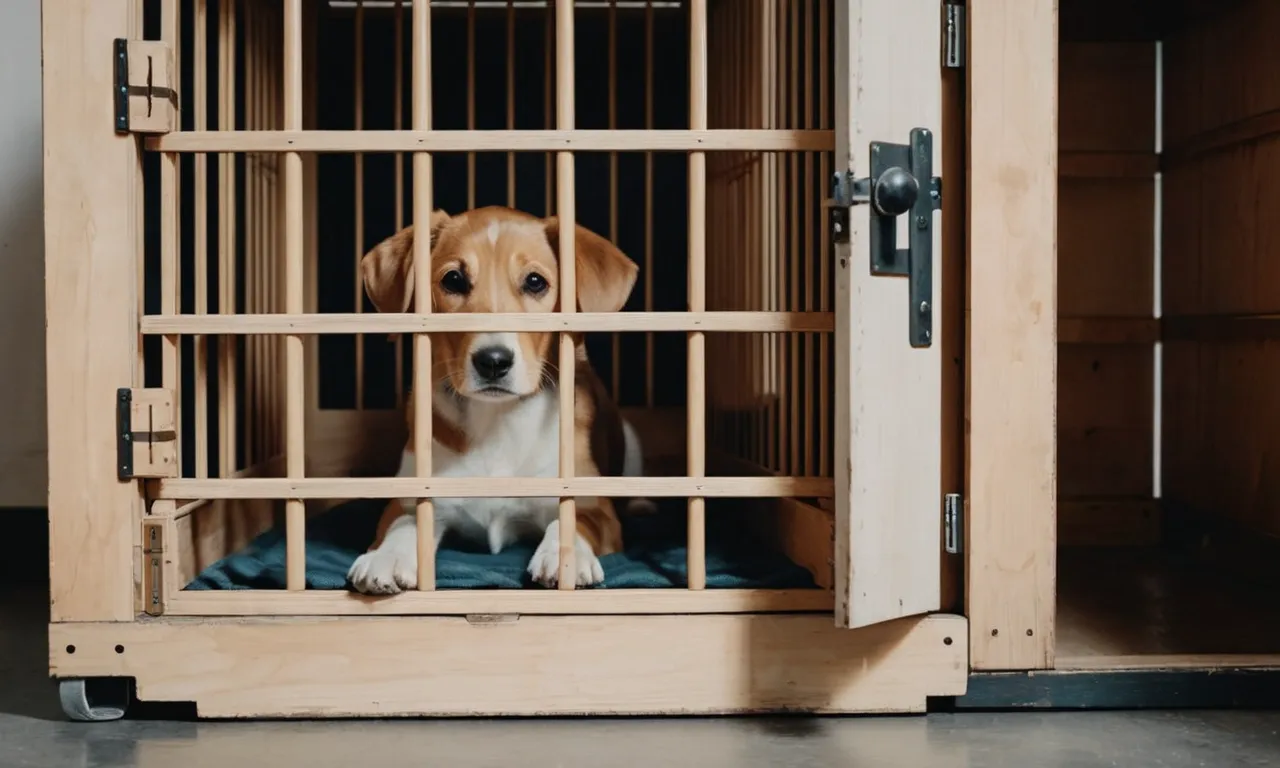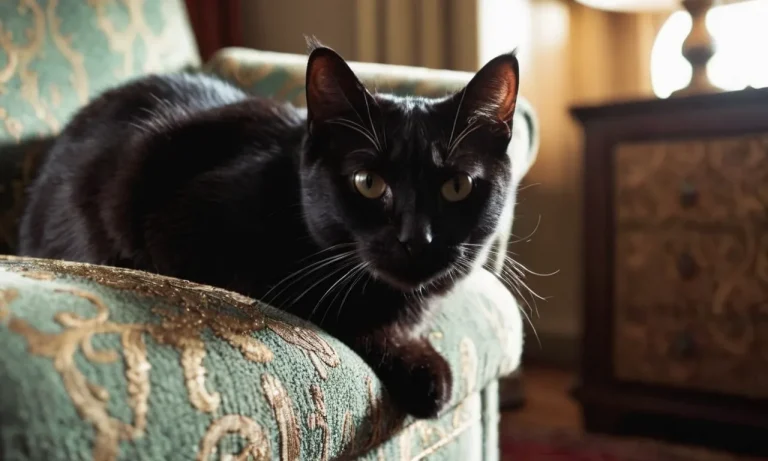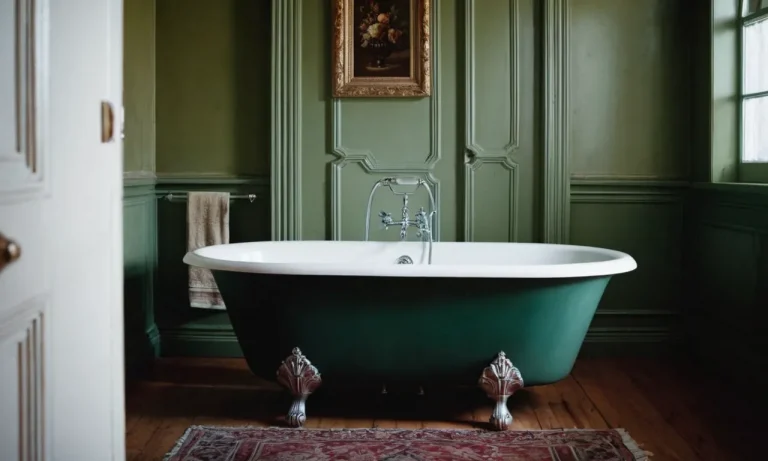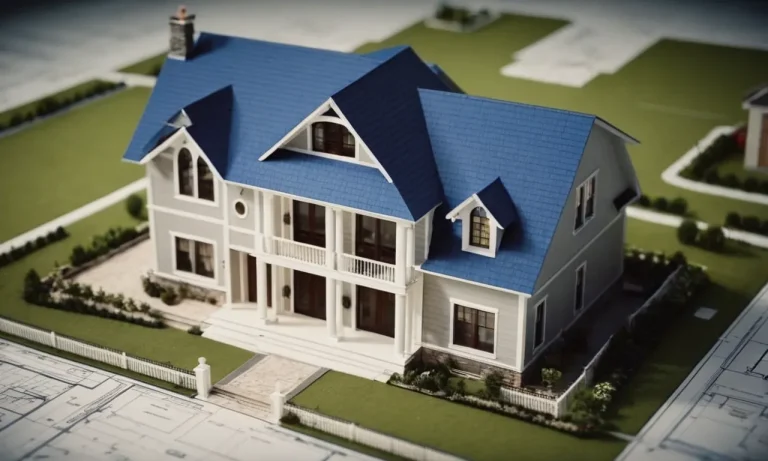Why Does My Dog Sleep In His Crate With The Door Open?
Dogs can develop strong attachments to their crates as safe spaces, so your pup sleeping in his crate with the door open likely means he feels comfortable and secure there. If you’re short on time, here’s the quick answer: Dogs often sleep in crates with doors open because it’s a den-like space they feel safe and relaxed in, but they don’t feel confined or trapped with the open door.
In this comprehensive article, we’ll explore the ins and outs of why your dog loves snoozing in his crate with the door ajar. We’ll cover the psychology behind this behavior, signs your dog sees his crate as a safe den, when to be concerned about a dog repeatedly sleeping in a crate, and tips to encourage positive crate training.
Dogs View Crates as Safe, Comforting Dens
Crates tap into a dog’s natural den instincts, providing them with a sense of security and comfort. Dogs are descendants of wolves, who seek out small, enclosed spaces to sleep and rest. Crates mimic the cozy dens that wolves would find in the wild, offering a safe and private space for dogs to retreat to.
Crates Tap Into a Dog’s Natural Den Instincts
By nature, dogs are den animals. They have an innate instinct to seek out small, enclosed spaces for relaxation and sleep. Crates provide them with a designated area that fulfills this instinct. The enclosed structure of a crate makes dogs feel protected and secure, which can help reduce anxiety and stress.
Similar to how humans have a bedroom or a favorite spot to relax, dogs see their crate as their own personal space. It becomes a familiar and comforting environment that they can retreat to when they need some alone time or a peaceful nap.
It’s important to note that crates should never be used as a form of punishment. Instead, they should be introduced gradually and positively, with the crate being associated with positive experiences such as treats, toys, and relaxation.
This will help your dog develop a positive association with their crate and view it as a place of comfort.
Open Crate Allows Your Dog to Come and Go
Even with the door open, dogs may choose to sleep in their crate because it provides them with a sense of security. The open crate allows your dog to come and go as they please, giving them the freedom to choose whether they want to be inside or outside of the crate.
Some dogs may prefer sleeping in their crate even when the door is open because it creates a cozy and den-like atmosphere. It can also act as a barrier between them and the rest of the household, reducing distractions and promoting better sleep.
It’s important to ensure that the crate is comfortable and inviting for your dog. Use soft bedding, provide their favorite toys, and consider placing the crate in a quiet area of the house where they can have some peace and quiet.
Remember, every dog is unique, and their preferences may vary. Some dogs may prefer to sleep in their crate with the door closed, while others may enjoy having the freedom to come and go. Pay attention to your dog’s behavior and cues to determine what makes them feel most comfortable and secure.
For more information on crate training and understanding your dog’s behavior, you can visit https://www.akc.org/expert-advice/training/crate-training-your-puppy/. This website provides valuable insights and tips from the American Kennel Club, a trusted authority in dog care and training.
Indications Your Dog Sees the Crate as a Safe Space
It is not uncommon for dogs to seek comfort and security in confined spaces, and sleeping in a crate with the door open is one way they may exhibit this behavior. Here are some indications that your dog sees the crate as a safe space:
Willingly Enters and Exits the Crate
If your dog willingly enters and exits the crate throughout the day, even when the door is open, it is a clear sign that they feel comfortable and secure in that space. Dogs are den animals by nature, and a crate can provide them with a sense of security and a place to retreat to when they need some alone time.
Relaxes and Sleeps Soundly Inside
When your dog chooses to sleep in the crate with the door open, it indicates that they find it to be a peaceful and calming environment. Dogs have a natural instinct to seek out cozy and enclosed spaces for rest, and a crate can provide them with the perfect spot to relax and sleep soundly.
Seeks Out the Crate for Comfort
If your dog actively seeks out the crate when they are feeling anxious or stressed, it is a clear indication that they view it as their safe haven. Whether it’s during thunderstorms or when there are loud noises, the crate provides your dog with a sense of security and comfort.
Remember, every dog is different, and while some may naturally gravitate towards crates, others may not. It is important to respect your dog’s preferences and provide them with alternative safe spaces if they do not enjoy being in a crate.
If you have any concerns about your dog’s behavior or well-being, it is always best to consult with a professional veterinarian or animal behaviorist.
When to Be Concerned About a Dog and Their Crate
While it is not uncommon for dogs to sleep in their crates with the door open, there are certain situations where you should be concerned about your dog’s behavior in relation to their crate. Here are some signs to look out for:
Signs of Stress or Anxiety in the Crate
If you notice that your dog becomes visibly stressed or anxious when inside their crate, even with the door open, it may be a cause for concern. Signs of stress can include excessive panting, pacing, whining, or barking.
These behaviors may indicate that your dog is not comfortable or feels trapped in their crate.
According to the ASPCA, separation anxiety can also contribute to a dog’s discomfort in the crate. It is important to address any underlying anxiety issues to help your dog feel more at ease in their crate.
Spending Too Much Time Confined
While crates can provide a safe and cozy space for dogs, it is essential to ensure that they are not spending excessive amounts of time confined in their crate. Dogs are social animals and need regular exercise, mental stimulation, and social interaction to thrive.
If your dog is spending the majority of their day in the crate, it can lead to boredom, frustration, and even physical health problems. Make sure to provide plenty of opportunities for your dog to stretch their legs, play, and interact with you and other pets.
Using the Crate to Avoid Behavior Problems
Sometimes, dogs may choose to sleep in their crates with the door open as a way to avoid behavior problems or conflicts with other pets or family members. If your dog consistently seeks refuge in their crate, it may indicate that there are underlying issues that need to be addressed.
Using positive reinforcement training techniques and seeking guidance from a professional dog trainer or behaviorist can help address these behavior problems effectively. It is important to create a harmonious environment where your dog feels safe and secure without the need to constantly seek refuge in their crate.
Remember, every dog is unique, and their behavior in relation to their crate may vary. If you are concerned about your dog’s crate behavior, it is always best to consult with a veterinarian or a certified dog trainer who can provide personalized advice based on your dog’s specific needs.
Tips for Successful Crate Training
If you’re wondering why your dog sleeps in his crate with the door open, it could be a sign that your crate training efforts have been successful. Crate training is a useful tool for teaching your dog to feel secure and comfortable in their crate, and it can also help with house training and preventing destructive behavior.
Here are some tips to ensure successful crate training for your furry friend:
Make the Crate Comfortable and Inviting
One of the most important aspects of crate training is ensuring that the crate is a comfortable and inviting space for your dog. Choose a crate that is spacious enough for your dog to stand up, turn around, and lie down comfortably.
Line the crate with soft bedding or a blanket to provide extra comfort. You can also add some of your dog’s favorite toys or treats to make the crate a positive and enjoyable space.
Use Positive Reinforcement
Positive reinforcement is key when it comes to crate training. Reward your dog with treats, praise, and affection whenever they enter the crate voluntarily or stay in the crate calmly. This helps create a positive association with the crate and encourages your dog to view it as a safe and pleasant place to be.
Avoid using the crate as a form of punishment, as this can create negative feelings towards it.
Take It Slow
Crate training should be a gradual process. Start by introducing your dog to the crate slowly, allowing them to explore it at their own pace. Encourage them to enter the crate by placing treats or toys inside, and gradually increase the amount of time they spend inside.
Be patient and give your dog plenty of positive reinforcement along the way. It’s important not to rush the process, as this can lead to anxiety or reluctance to enter the crate.
Watch for Signs of Readiness
Every dog is different, so it’s important to watch for signs that your dog is ready to sleep in their crate with the door open. These signs may include your dog voluntarily entering the crate, settling down comfortably, and showing no signs of anxiety or distress.
Once you notice these signs, you can start leaving the crate door open during sleep time. However, it’s important to continue providing a comfortable and inviting environment inside the crate to ensure your dog feels secure.
Crate training can be a beneficial experience for both you and your dog. It provides them with a safe and comfortable space and gives you peace of mind knowing that they have a designated area where they can relax.
Remember to be patient, use positive reinforcement, and make the crate a welcoming place for your furry friend. Before you know it, your dog might be sleeping soundly in their crate with the door wide open!
Conclusion
In summary, a dog who snoozes contentedly in his crate with the door open views it as a safe, comforting den. The open door allows him to come and go while still feeling secure in his space. Ensure your dog has positive associations with his crate by making it cozy and rewarding him for spending time inside.
With patience and consistency, the crate can become his favorite chill-out zone.
If you notice signs of stress around the crate, rethink your training approach. But in most cases, finding your pup catching Z’s in his open crate is perfectly natural dog behavior. Let him enjoy the solace of his den!







